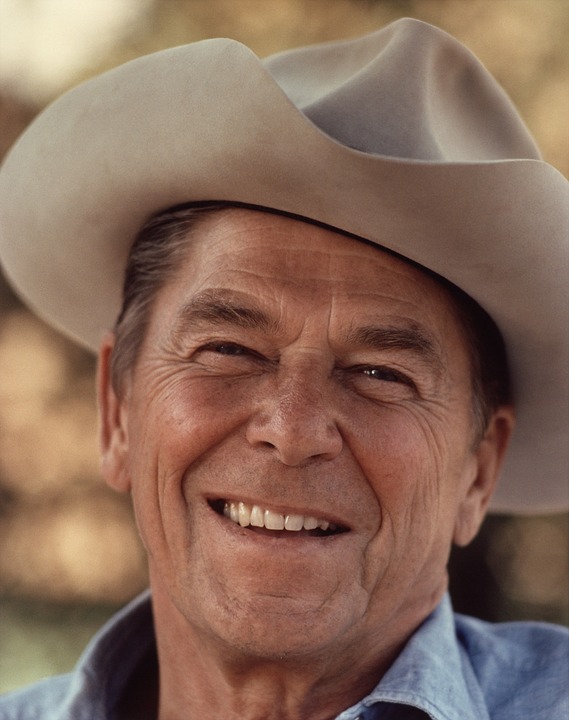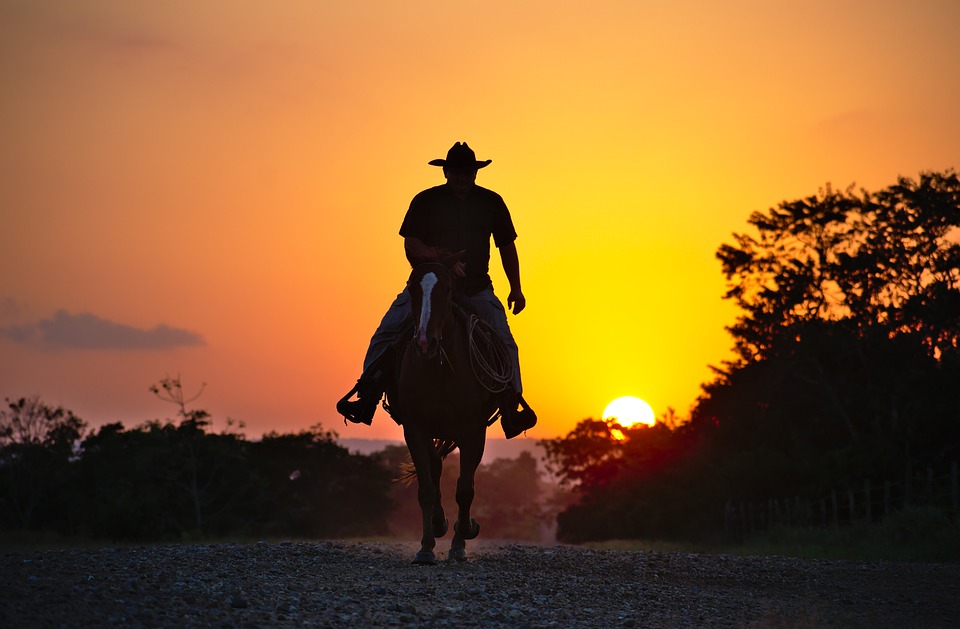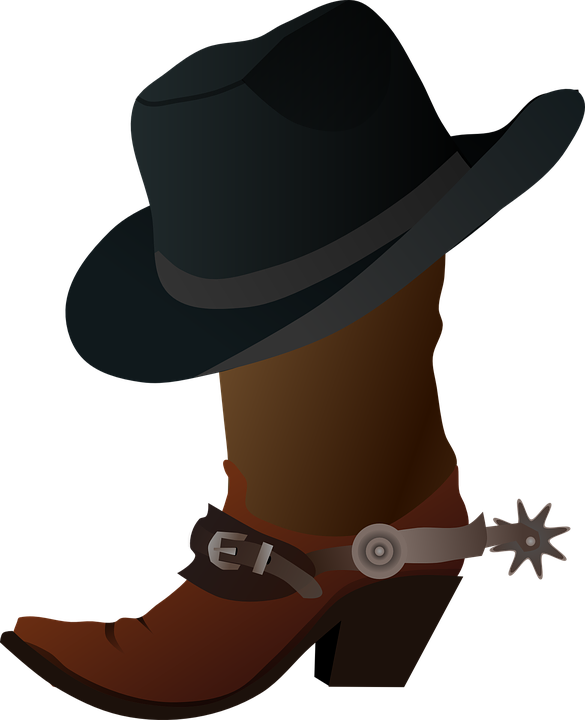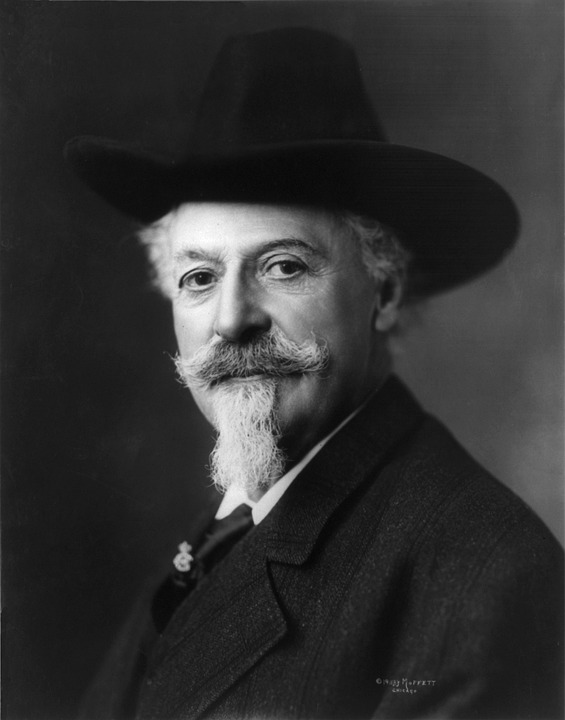The American Wild West

The American Wild West was a time of cowboys on horseback wearing wide-brimmed Stetsons, bandannas around their necks and spurs that jingled on their boots who played an important role in frontier history.
They helped to run ranches, herded cattle, repaired fences and buildings, took care of the horses and worked on cattle drives.
Working long hours they drove the cattle from one watering place to the next, they had to guard against predators, straying cattle, and stampedes at night.
For his hard and dirty work, a cowboy earned between $25 and $40 a month.
The American Wild West
The American Wild West refers to the period from the end of the Civil War in 1865 to around 1900.
It tells the stories of the pioneers, the settlers, the cattle kings, gold mining, railroads and steamboats, the cowboys, Indians, outlaws and gun slingers.
Famous characters of the Wild West include Wyatt Earp, Doc Holliday, Bat Masterson, Billy the Kid, Calamity Jane and Belle Starr.
After the first European settlers arrived in America, many move westward seeking a new life and the promise of prosperity.
The West offered land, good soil for farming and new opportunities to get rich that could not be done in the East.
The Two-Fisted Town Tamer

The American Wild West
Thomas James Smith, also known as "Bear River Smith" (12 June 1830 - 2 November 1870), was a lawman in the American Wild West and a marshal of cattle town, Abilene, Kansas.
Smith was a quiet-spoken lawman with a rugged reputation who came from New York City, where he worked as a police officer.
While working as a police officer in New York City in 1868, Smith was involved in the accidental killing of a fourteen-year-old boy, after which he resigned.
He also served as a lawman in small towns in Wyoming, Bear River and in Kit Carson, Colorado.
Marshal of Abilene
Abilene, Kansas, was a wild cattle town with numerous saloons, brothels and lawlessness.
From 1867, crime had increased to the point where murder and shootings were a regular occurrence.
Tom Smith was commissioned as Deputy US Marshal to bring law and order to Abilene in 1869 and insisted that he could enforce the law by using his fists rather than using guns.
Soon after taking office, Smith overpowered both, "Big Hank" Hawkins and "Wyoming Frank" and banished them from Abilene, after beating them both at the same time using only his bare hands.
Smith also introduced a "no guns in the town limits" law which was extremely unpopular.
Over the next two months, Smith survived two assassination attempts.
His tough reputation and several arrests of law-breakers led him to become widely respected and admired by the citizens of Abilene.
On the 2nd of November, 1870, Smith and a temporary deputy went to serve a warrant to Andrew McConnell and Moses Miles about the murder of another Abilene citizen.
They located the suspects ten miles outside of Abilene where a gunfight erupted.
Smith was badly wounded in the chest and his deputy fled the scene.
Moses Miles then took an axe and decapitated Tom Smith.
McConnell and Miles were captured and arrested in March 1871.
Andrew McConnell got 12 years in prison and Moses Miles spent 16 years and released.
Tom Smith was buried in Abilene, and a huge tombstone was erected with a plaque to honor his service in Abilene.
Smith was replaced as marshal by legendary lawman and gunfighter "Wild Bill" Hickock.
Ronald Reagan, as the host of the syndicated western television series, Death Valley Days, played Smith in the 1965 episode "No Gun Behind His Badge".

Colter's Run

The American Wild West
John Colter (c.1770-1775 - May 7, 1812 or November 22, 1813) was a mountain man and explorer who was a member of the Lewis and Clark Expedition of 1803 to 1806 commissioned by President Thomas Jefferson, to explore and map the newly purchased American Northwest from Napoleonic France, and beyond after the Louisiana Purchase of 1803.
Colter also became the first person of European descent to enter the region which later became Yellowstone National Park and to see the Teton Mountain Range during the winter of 1807-1808.
Blackfeet Indians
In 1809, Colter teamed up with John Potts, another former member of the Lewis and Clark Expedition to trap for beaver for the lucrative fur trade near the Jefferson River in what is now Montana when they encountered several hundred of the dreaded Blackfeet Indians while traveling by canoe.
The Blackfeet demanded they come ashore.
Colter complied and was disarmed and stripped naked.
Potts refused and was shot and wounded.
Potts then killed one of the Indian warriors and was immediately riddled with arrows fired by the Indians from the shore.
His body was then brought to shore and hacked to pieces.
Run-For-Life
After the Blackfeet deliberated how to kill Colter, the chief decided to allow him to run for his life and to be chased by the Indians with spears.
They took him to a nearby plain and gave him a three to four hundred yard start.
Colter, knew that he must outrun the Blackfeet if he had any chance of surviving.
He started his run-for-life across the plain and had out-paced the Indians except for one who was about twenty yards behind him.
Determined to avoid the expected spear-throw, he suddenly stopped, turned around, and spread out his arms.
The surprised Indian, too exhausted from running, fell when he tried to throw his spear.
Colter immediately snatched up the spear and killed him then, continued his run with the rest of the Indians following at a distance.
Colter reached the Madison River, five miles from his start, and hid under driftwood near a beaver lodge.
He could hear the yells of the Blackfeet, who looked up and down the river to find him.
He waited till night, then climbed out and walked completely naked and frozen, toward a trader's fort.
Colter became weaker from hunger and exhaustion, surviving only on roots and bark and had bloodied feet from prickly cactus thorns piercing his feet.
Miraculously, Colter reached Manuel Lisa's Fort within seven days where he was greeted by his friends.
After a few weeks when he regained his strength, he headed back to Blackfeet country that winter to collect the traps he had left behind.
John Colter lived five more years after his incredible run, dying of jaundice in Missouri, where he lies in an unmarked grave.
Alexander Todd

The American Wild West
Former clerk, Alexander Todd got gold fever so, he went to California to seek his fortune.
He soon realized that he didn't have the physical stamina to endure the backbreaking work at the gold fields in the freezing rivers of the Mother Lode (rich source of an ore or mineral).
However, it didn't take him long to find opportunities to make money without having to pan for gold.
California Gold Rush
California had grown fast with the gold rush that getting a letter from San Francisco to the Mother Lode country was difficult.
The federal government was shipping mail to California by way of the Isthmus of Panama, a route that was as lengthy and uncertain for the mail service as it was for the Forty-Niners (gold seekers in the California gold rush of 1849).
Todd scoured the mining camps and signed up hundreds of lonely miners who yearned for word from home.
The nearest post office was in San Francisco which was a two-week trip there and back.
The miners couldn't leave their claim that long so they signed-up for the mail service.
On July 14, 1849, Todd began carrying mail to the San Francisco post office charging $2.50 a letter and an ounce of gold, $16 for personal delivery of any mail that he found for addresses in the mining camp.
On his first trip, he delivered $150,000 in gold for some merchants to a company in San Francisco and was paid $7,500.
When Todd handed the clerk at the San Francisco post office the long list of names, the clerk swore Todd in as a postal clerk so he could search the stacks of letters himself charging twenty-five cents for each letter he found.
That didn't bother Todd because he had discovered another way to make money.
He bought old New York newspapers for a dollar each and sold for $8 back at the gold fields.
Another money-making business he introduced was packing gold from the mining camps to deposit in San Francisco in exchange for five percent of its value.
Everything he Did Turned to Gold
Without having to touch a pick or a shovel, Alexander Todd made a fortune using good old American ingenuity.
The American Wild West
The Cowboy Artist

The American Wild West
Charles Marion Russell (1864 - 1926), "the cowboy artist," storyteller and author (also known as C. M. Russell, Charlie Russell, and "Kid" Russell) was born in St. Louis, Missouri on March 19, 1864.
He was an artist of the American Wild West who created more than 4,000 works of art during his lifetime, working in paint, bronze, ink, and wax of cowboys, Indians, and landscapes, set in the Western United States and in Alberta, Canada.
Russell loved the "Wild West" and would spend hours reading about it and enjoyed speaking to explorers and fur traders who came through Missouri.
He learned to ride horses at Hazel Dell Farm near Jerseyville, Illinois, on a famous Civil War horse named Great Britain from Col. William H. Fulkerson, who had married into the Russell family.
At the age of sixteen, Russell left school to follow his dream of the Wild West as a cowboy on a sheep ranch in Montana then, moved on to work with Jake Hoover, a hunter and trapper who had become a rancher.
From Hoover, he learned much about life in the Wild West and they remained lifelong friends.
In 1882, at the age of eighteen, Russell worked as a cowboy for a number of outfits in Montana.
It was in 1885 when he began to work as an artist.
During the winter of 1886-1887 while working on the O-H Ranch in the Judith Basin of Central Montana, he painted a number of watercolors.
When the ranch foreman received a letter from the owner, asking how the cattle had weathered the winter he sent a postcard-sized watercolor that Russell had painted of a haggard steer being preyed by wolves under a gloomy winter sky.
The ranch owner showed the postcard to friends and business acquaintances and eventually it was displayed in a shop window in Helena, Montana giving Russell his first taste of publicity and to receiving commissions for new work.
His watercolor, "Waiting for a Chinook", became one of his best-known works.
Native American Culture
In 1888, Russell gained valuable knowledge of Native American culture when he spent time with the Blood Indians, a branch of the Blackfeet.
He became an advocate for Native Americans and supported the Chippewa to have a reservation established for them in Montana.
In 1916, Congress passed legislation to create the Rocky Boy Reservation.
Marriage
In 1892 he settled in Great Falls, Montana and in 1896 he married his wife Nancy.
Between 1904 until his death in 1926, he also modeled 46 subjects to be cast in bronze.
His 1914 painting "When the Land Belonged to God" is a nostalgic work from an ageing artist looking back on his youth in the Wild West..
Worldwide Acclaim
Charles Marion Russell had now become a celebrity and gained worldwide acclaim.
*Four Russell paintings sold for more than $100,000.
*"Water Girl (No. 1)," sold for $220,000.
*"Blood Chief" brought $200,000.
"Portrait of Indian" sold at $150,000.
His 1918 painting Piegans sold for $5.6 million.
In 1955, he was inducted into the Hall of Great Westerners of the National Cowboy & Western Heritage Museum.
The Iconic Stetson Hat

The American Wild West
John Batterson Stetson (May 5, 1830 - February 18, 1906) was an American hatter who founded the John B. Stetson Company manufacturing the classic cowboy hat in 1865 during the Gold Rush.
The Stetson is probably, the best known hat in the world and is synonymous with the cowboy lifestyle.
It has become an American classic like baseball, apple pie and the Fourth of July.
Stetson, had his name, John B. Stetson Company, embossed in gold in every hatband and became the most well-known hat in the West.
He sold his first hat for five dollars and by 1900, he had the largest hat factory in the world.
John B. Stetson
John B. Stetson was born in New Jersey, the 8th of 12 children.
His father, Stephen Stetson was a hatter so, as a youth, John worked with him until he was diagnosed with terminal tuberculosis.
In 1859, he left the hat-making business to explore his passion for the American West and hoped to cure his tuberculosis in a more natural environment.
While there, he worked during the Gold Rush at Pike's Peak, Colorado, where an estimated 100,000 gold seekers took part in one of the greatest gold rushes in North American history.
During his time in the West, Stetson also met drovers, bullwackers and cowboys and noticed their flea-infested coonskin caps, sea-captain hats, straw hats and wool derbies worn by many offered no protection.
He thought that an all-weather hat was better suited for the rugged environment of the West and decided to invent a waterproof, felt-hat that was durable, lightweight and natural in color with a four-inch crown and wide brim with a plain strap band.
"Boss of the Plains"
In 1865 Stetson returned to Philadelphia and founded the John B. Stetson Company as a manufacturer of hats designed in the style worn by the Vaqueros (cowboys) of Northern Mexico for the demands of the American West.
He mass-produced the "Boss of the Plains" hat as a symbol of authority and elegance.
The wide brim protected people from the hot sun.
The crown could be used to water a horse.
The brim could be used by the owner as a cup to drink.
The hat could be used to shunt cows in certain directions.
And, it could be used to fan a fire.
Famous People Who Wore a Stetson
Western icons such as Buffalo Bill Cody, Calamity Jane and Annie Oakley wore Stetsons.
So did famous cowboy actors like Tom Mix, Will Rogers, Roy Rogers, the Lone Ranger and John Wayne.
Many U.S. Presidents wore Stetsons which included Theodore Roosevelt and Ronald Reagan.
The company also made hats for the Texas Rangers, U.S. Cavalry soldiers and employees of the National Park Service.

Ezine Articles Author Link
Click on the Link Below

Newsletter Opt-in-Form
The Keen Traveler
Your second block of text...
Recent Articles
-
The Power Within
Jan 07, 26 05:19 AM
The power within empowers you to shape your own life and goals that are aligned with your true self. -
When all we Have is God
Dec 20, 25 04:21 AM
When all we have is God in times of loss hardship or loneliness God's Presence offers refuge, strength and a purpose for the future. -
Beauty of Christmas
Dec 11, 25 04:22 AM
The beauty of Christmas is the celebration of the real Christmas Story with the Birth of Jesus Christ, the Son of God, Who came to bring love, hope, and salvation to the world.


